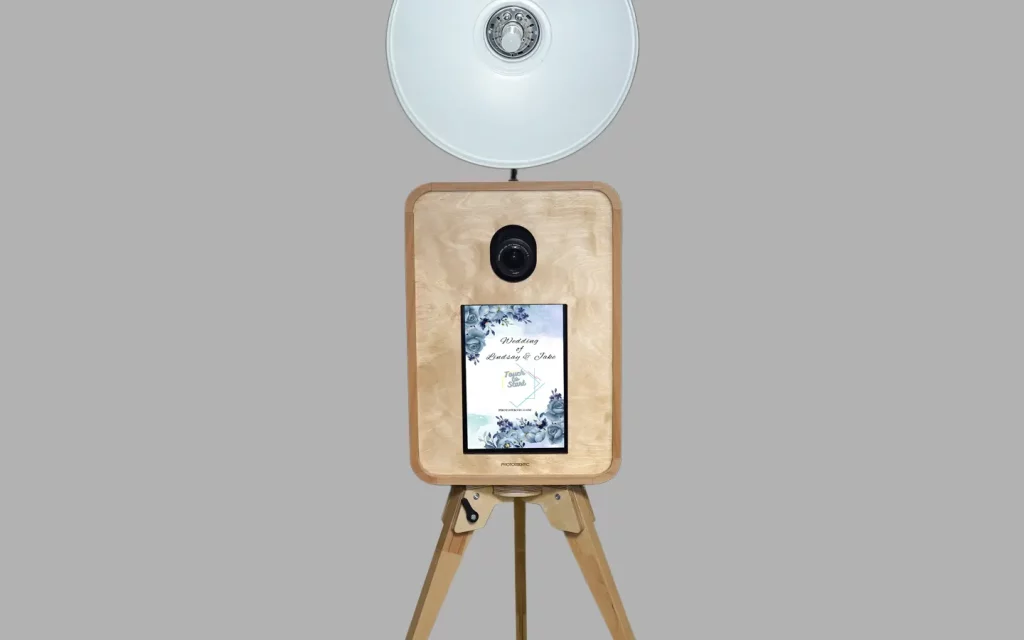The prospect of launching a photo booth, whether for personal events or as a commercial venture, can be exciting. However, to ensure the long-term success and profitability of your endeavor, creating a detailed budget is crucial. This detailed guide was prepared by seeking help from the team at PhotoTek NYC, a photo booth rental company in NewYork and provides a comprehensive approach to crafting a photo booth budget, covering essential aspects such as equipment costs, marketing expenses, software needs, and miscellaneous items. By meticulously planning your budget, you can better prepare for the financial requirements of starting and running a successful photo booth business.
Key Highlights:
- Selecting the perfect niche and generating exceptional content are pivotal to establishing a thriving affiliate marketing enterprise.
- Transparency and trust serve as foundational principles for forging robust connections with your audience while adhering to FTC regulations.
- Commitment, continual learning, and adaptability are imperative for sustained growth in the affiliate marketing realm.
Research and planning are fundamental steps when setting up a photo booth business. Here’s an enhanced version of the research and planning process:
Market Research: Conduct thorough market research within the photo booth industry to gain insights into costs, pricing strategies, and revenue potential. Analyze competitors, target markets, and industry trends to make informed decisions about your business strategy.
Define Your Goals: Clearly define the objectives of your photo booth venture, whether it’s for personal events, professional services, or as a business endeavor. Establish specific and measurable goals to guide your budgeting process and overall business plan.
Identify Equipment Needs: Identify and list all the essential equipment needed for your photo booth setup, including a high-quality camera, versatile backdrops, adequate lighting equipment, engaging props, a reliable printer, and efficient software. Consider factors like durability, ease of use, and versatility when selecting equipment to ensure a seamless operation.
By enhancing your research and planning process with a detailed market analysis, well-defined goals, and a comprehensive equipment assessment, you can effectively structure your budget, optimize resource allocation, and set a solid foundation for a successful photo booth business.
Cost Breakdown is a critical aspect of managing a photo booth budget effectively. Here’s an enhanced version of the cost breakdown process:
Equipment Costs: Begin by conducting thorough research to compare prices for each piece of equipment required for your photo booth setup. Explore both new and used equipment options to find cost-effective solutions without compromising quality. Consider factors like durability, functionality, and warranty when making equipment purchases to ensure a reliable setup.
Operating Costs: Factor in various operating expenses essential for running your photo booth business. Include costs for printing materials, such as paper and ink cartridges, props to enhance photo experiences, regular maintenance to keep equipment in optimal condition, transportation expenses for moving your booth to different locations, and storage costs to safely store your equipment when not in use. By accurately estimating these operating costs, you can better manage your budget and ensure smooth operations.
Marketing and Promotion: Allocate a dedicated budget for marketing and promotional activities to attract clients or guests to your photo booth. Consider investing in online marketing strategies like social media advertising, website optimization, and email campaigns to reach a wider audience. Collaborate with event planners, wedding venues, and corporate clients to expand your reach and generate more bookings. Effective marketing efforts can significantly impact the success and profitability of your photo booth business.
Insurance and Permits: Don’t overlook the importance of including costs for insurance coverage and obtaining necessary permits or licenses for operating your photo booth business legally. Research the insurance options available for equipment protection, liability coverage, and business interruption insurance. Additionally, check local regulations and requirements to secure the appropriate permits or licenses needed to operate your photo booth business in compliance with the law. By accounting for insurance and permit costs upfront, you can mitigate risks and ensure a smooth operation without facing legal issues.
By meticulously breaking down costs into equipment expenses, operating costs, marketing and promotion budgets, as well as insurance and permit fees, you can create a comprehensive budget plan that covers all essential aspects of running a successful photo booth business while maximizing profitability.
When projecting revenue for your photo booth business, it’s essential to consider various factors to ensure accurate estimations. Here’s an enhanced version of the revenue projection process:
Pricing Strategy: Develop a pricing structure that aligns with market rates, considers competition, and resonates with your target audience. Analyze pricing trends in the photo booth industry, evaluate competitor pricing strategies, and tailor your rates to reflect the value you offer. Pricing competitively while highlighting unique features can attract clients and maximize revenue potential.
Estimate Bookings: Forecast the number of bookings you anticipate receiving within a specific period to calculate potential revenue. Consider seasonal variations, event trends, and market demand when estimating bookings. Utilize historical data, market research, and networking to gauge the volume of bookings you can expect, allowing for more accurate revenue projections.
Additional Services: Explore opportunities to increase revenue by offering add-on services that enhance the photo booth experience. Consider providing custom backdrops, themed props, instant social media sharing, or personalized photo packages for clients willing to pay extra. By diversifying your service offerings and catering to varying client preferences, you can boost revenue streams and attract a broader range of customers.
By strategically determining your pricing structure, accurately estimating bookings, and incorporating lucrative add-on services, you can develop comprehensive revenue projections that align with your business goals and maximize profitability in the competitive photo booth market.
When it comes to managing a photo booth business effectively, having a contingency fund is crucial to handling unexpected expenses and emergencies. Here’s an enhanced version of the contingency fund strategies:
Buffer for Unexpected Costs: Allocate a portion of your budget to establish a contingency fund specifically designated for unforeseen expenses or emergencies that may arise during the operation of your photo booth business. Unforeseen costs could include equipment repairs, sudden maintenance needs, or unexpected event cancellations. By setting aside funds for such situations, you can mitigate financial risks and ensure the continuity of your business operations without compromising quality or service delivery.
Reinvestment: Plan to reinvest a portion of your profits back into the business to facilitate growth, innovation, and sustainability. Consider allocating funds for equipment upgrades to enhance service quality, investing in marketing strategies to expand your client base, or allocating resources for business expansion opportunities. Reinvesting profits strategically can help you stay competitive in the market, attract more customers, and position your photo booth business for long-term success.
By proactively setting up a contingency fund for unexpected costs and prioritizing reinvestment for business growth and development, you can strengthen the financial resilience of your photo booth business, seize growth opportunities, and ensure its long-term viability in a competitive industry.
Monitoring and adjusting your photo booth budget is essential for maintaining financial health and optimizing profitability. Here’s an enhanced version of the monitoring and adjusting process:
Track Expenses: Implement a robust system to meticulously track all expenses and revenue generated by your photo booth business. Keep detailed records of equipment costs, operating expenses, marketing investments, and income from bookings. Regularly reconcile financial data to gain insights into cash flow, profitability, and overall financial performance. By maintaining accurate records, you can make informed decisions, identify cost-saving opportunities, and track the effectiveness of your budget allocations.
Regular Review: Schedule periodic reviews of your budget to evaluate performance, identify areas for improvement, and make necessary adjustments. Analyze budget variances, compare actual expenses against projected costs, and assess revenue trends to gauge the financial health of your photo booth business. Use these insights to refine your budgeting strategies, reallocate resources effectively, and optimize financial outcomes. By conducting regular budget reviews, you can adapt to changing market conditions, capitalize on growth opportunities, and ensure the long-term success of your venture.
By diligently tracking expenses and revenue while conducting regular budget reviews to assess performance and make informed adjustments, you can effectively manage your finances, enhance profitability, and position your photo booth business for sustained success in a dynamic market environment.
When setting up a photo booth, the cost can vary significantly based on the equipment and services chosen. Here’s an enhanced breakdown of the initial investment based on the provided sources:
Basic Option: A basic setup can cost approximately $2,139, which includes essentials like a roaming photo booth, a refurbished iPad, basic software, insurance coverage, and minimal marketing expenses. This budget-friendly option provides the necessary equipment for a functional photo booth setup at a relatively lower cost.
Mid-Level Option: Opting for a mid-level setup may require an investment of around $4,899. This package typically includes a hybrid roaming/stationary booth, upgraded software for enhanced features, a backdrop, props, insurance coverage, and moderate marketing expenses. The mid-level option offers a balance between affordability and additional features to enhance the photo booth experience.
High-End Option: For a high-end setup featuring a DSLR booth, printer stand, computer, high-quality camera, advanced software, printer, a wide range of props, comprehensive insurance coverage, and robust marketing efforts, the cost can reach approximately $7,908. This premium option provides top-of-the-line equipment and services to deliver a sophisticated and professional photo booth experience.
These estimates showcase the range of costs associated with different levels of equipment and services when setting up a photo booth business. It’s essential to consider factors like equipment quality, software capabilities, and additional business expenses when determining the overall investment required for your photo booth venture.
When managing a photo booth budget, it’s crucial to implement strategic measures to optimize costs and enhance profitability. Building on the insights from the provided sources, here are enhanced tips for effectively managing a photo booth budget:
Strategic Rental Time: Strategically plan the rental time for the photo booth to minimize costs while ensuring adequate coverage for events.
Self-Service Option: Consider opting for a self-service photo booth setup without an attendant to reduce expenses and streamline operations.
Explore Mail Order Services: Explore cost-effective mail order photo booth rental services as a budget-friendly alternative for event setups.
Bundle Services: Look for companies offering bundled packages that combine photo booth rental with photography services to potentially secure discounts and optimize budget utilization.
Off-Peak Booking: Take advantage of off-peak booking times, such as weekdays or off-season periods, to secure lower rates and maximize cost savings.
Seek Special Discounts: Inquire about special discounts available for schools or organizations to further reduce costs and enhance affordability.
DIY Setup Options: Consider setting up a DIY photo booth using affordable components like a ring light kit, backdrop, stand, and iPad, offering a budget-friendly solution suitable for smaller events.
Cost-Effective Props: Opt for cost-effective props sourced from local party stores, thrift shops, or DIY materials like wooden skewers and foam-paper sheets to keep prop expenses minimal.
Efficient Photo Printing: Simplify the photo printing process by having a staff member manage photo-taking and printing using a smartphone instead of complex guest-installed software, reducing operational costs.
Gradual Equipment Upgrades: Start with a basic equipment setup and gradually upgrade as your business expands and financial resources allow, ensuring you cater to diverse client needs while managing costs effectively.
By implementing these advanced strategies in managing your photo booth budget, you can optimize expenses, enhance operational efficiency, and maximize profitability in your photo booth business or event setup.
Launching a photo booth business is well within reach! This guide empowers you to navigate budgeting, from initial planning to ongoing cost-saving strategies. Remember, a well-crafted budget, considering market rates and competitor pricing, is key. Implement smart measures like strategic rentals and DIY props to optimize profitability. With careful financial planning, you can turn your photo booth dreams into a reality, regardless of your chosen setup.



